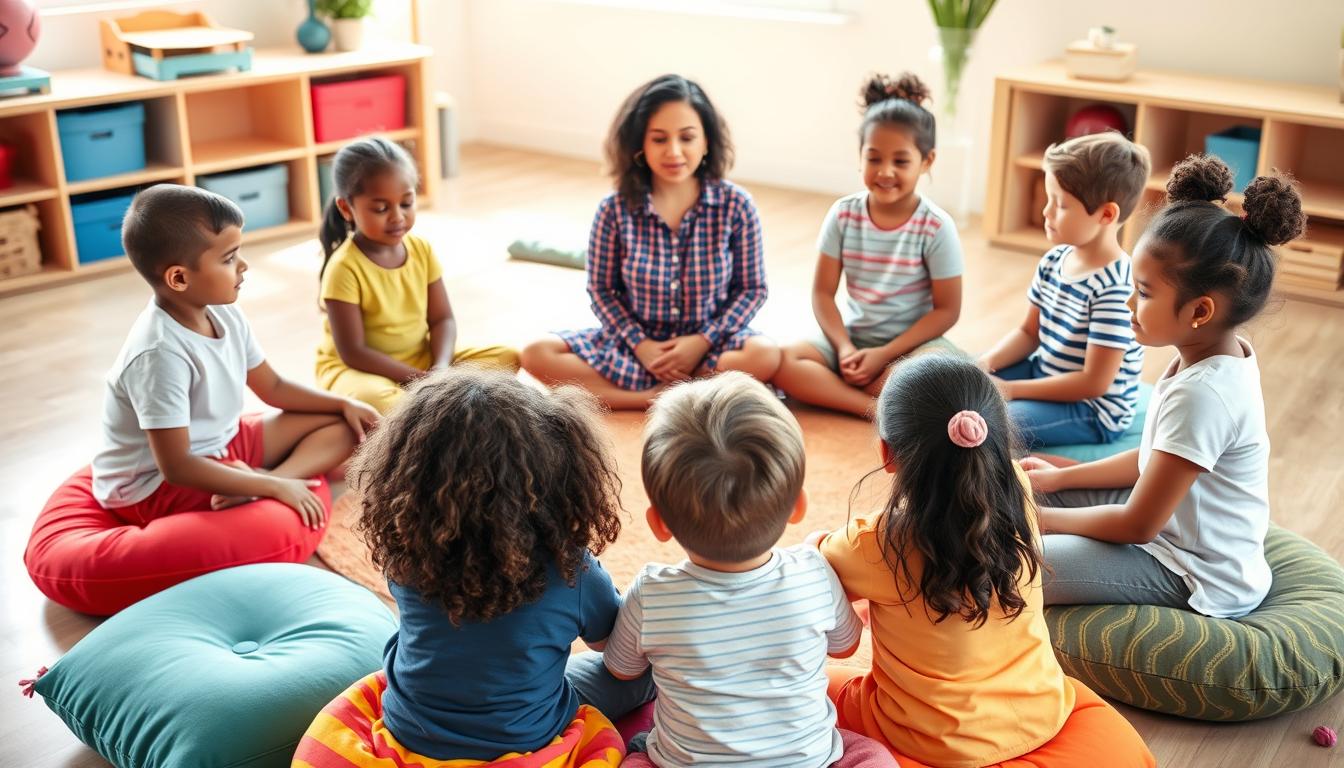Simple Mindfulness Activities for Kids
Mindfulness isn’t about sitting perfectly still or emptying the mind—it’s about paying attention to the present moment with kindness and curiosity. When children learn these skills early, they develop valuable tools they’ll use throughout their lives to manage stress, regulate emotions, and build resilience.
Why Mindfulness Matters for Kids
Children today navigate a world full of stimulation, academic pressures, and social challenges. Mindfulness provides them with essential tools to process their experiences and develop emotional intelligence. Research shows that regular mindfulness practice can help children:
- Reduce anxiety and stress responses
- Improve focus and attention span
- Develop better emotional regulation
- Build greater self-awareness
- Enhance empathy and compassion
- Improve sleep quality
- Boost overall well-being
The early years are an ideal time to introduce mindfulness because children’s brains are still developing. The neural pathways formed during childhood create the foundation for lifelong habits and responses. By teaching mindfulness early, we help wire children’s brains for greater attention, emotional balance, and resilience.
Even a few minutes of mindfulness practice can activate the body’s relaxation response, reducing stress hormones and creating a sense of calm. For children, these brief moments of mindful awareness can be transformative, helping them navigate big emotions and challenging situations with greater ease.
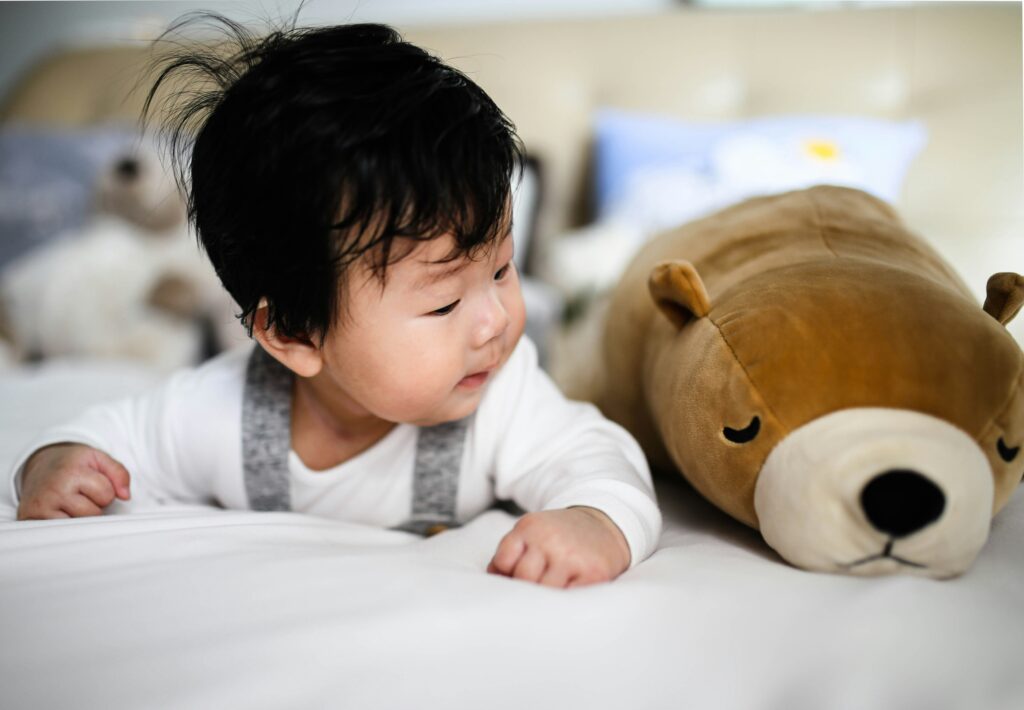
Free Printable Mindfulness Activity Cards
Download our beautifully illustrated mindfulness activity cards to make practicing with your child easy and fun. Each card features a simple exercise with clear instructions that you can use anytime, anywhere.
10 Simple Mindfulness Activities for Kids
These kid-friendly mindfulness exercises are designed to be simple, engaging, and effective. Each activity takes just a few minutes and requires minimal or no supplies, making them perfect for busy families, classrooms, or therapy sessions.
1. Belly Breathing with a Stuffed Animal
This simple breathing exercise helps children connect with their breath in a tangible, visual way.
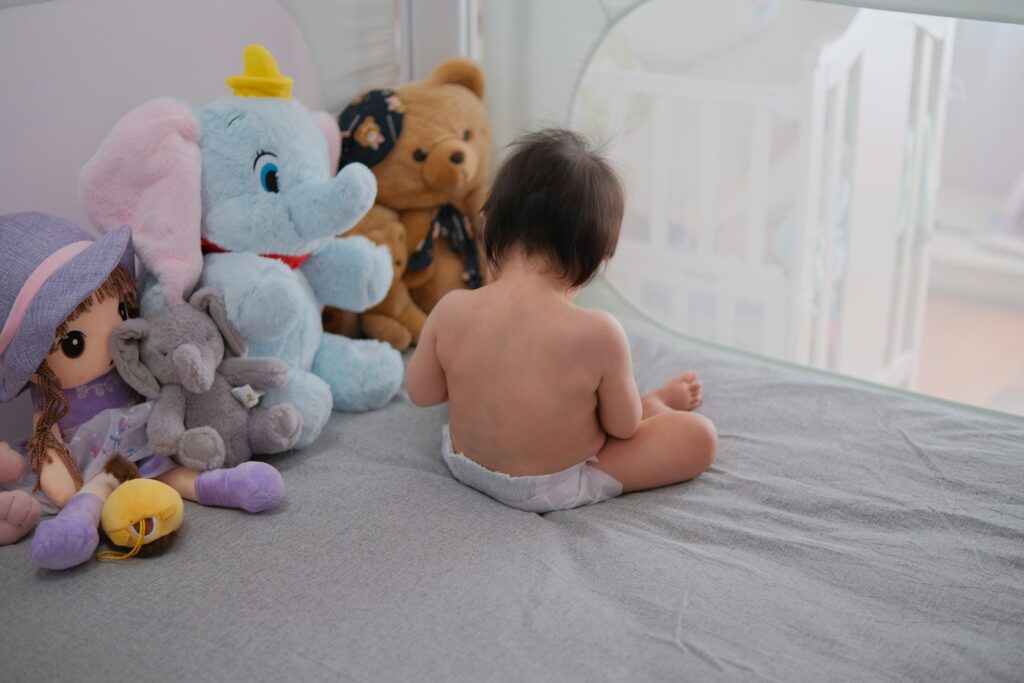
How to practice: Have your child lie on their back and place a favorite stuffed animal on their belly. Ask them to breathe deeply and watch as the stuffed animal rises and falls with each breath. Encourage them to focus on the movement and sensation. For younger children, you can pretend they’re gently rocking their toy to sleep with their breath.
Benefits: This activity teaches deep diaphragmatic breathing, helps children visualize their breath, and creates a calming effect on the nervous system.
2. Mindful Listening to Nature Sounds or Music
This activity sharpens listening skills and helps children tune into their surroundings with greater awareness.
How to practice: Have children sit or lie down comfortably and close their eyes. Play nature sounds (like rainfall, ocean waves, or birdsong) or gentle instrumental music. Ask them to focus completely on what they hear. Encourage them to notice different sounds, patterns, and how the sounds make them feel.
Benefits: Develops focused attention, auditory discrimination skills, and helps children practice being present with sensory experiences.
3. Glitter Jar Calming Exercise
A glitter jar serves as a visual metaphor for emotions and thoughts, helping children understand how mindfulness works.
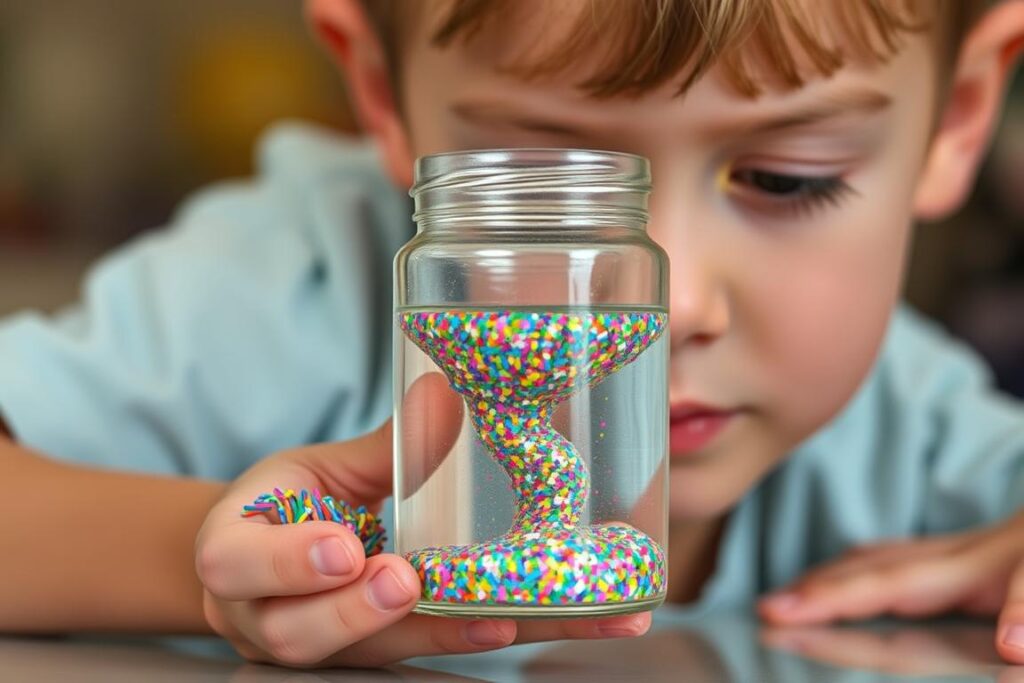
How to create and use: Fill a clear plastic bottle or jar with water, a few tablespoons of glitter glue, and extra fine glitter. Seal tightly. When a child feels overwhelmed or needs to calm down, have them shake the jar and then watch quietly as the glitter slowly settles. Explain that our minds are like the jar—when we’re upset, our thoughts swirl around, but when we’re still and quiet, our thoughts settle and become clearer.
Benefits: Provides a visual representation of how mindfulness works, helps with emotional regulation, and offers a concrete tool for calming down.
4. “5-4-3-2-1” Grounding Technique
This sensory awareness exercise helps anxious or overwhelmed children reconnect with their surroundings.
How to practice: Guide your child to notice:
- 5 things they can see
- 4 things they can touch or feel
- 3 things they can hear
- 2 things they can smell
- 1 thing they can taste (or one thing they’re grateful for)
Benefits: Helps children who feel anxious or overwhelmed to ground themselves in the present moment through sensory awareness.
5. Body Scan
A body scan helps children develop awareness of physical sensations and learn to release tension.
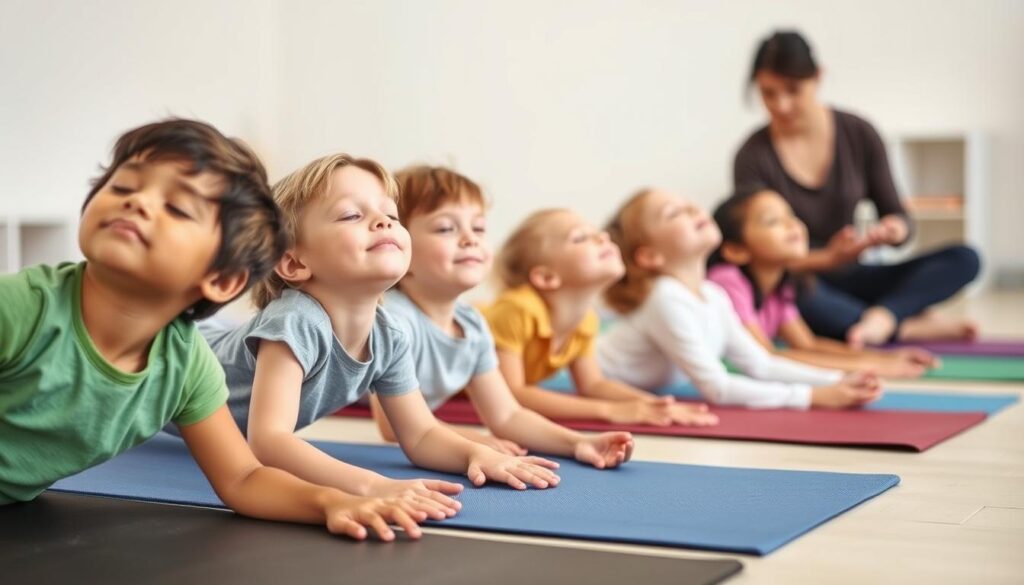
How to practice: Have your child lie down comfortably and close their eyes. Guide them to bring attention to different parts of their body, starting from their toes and moving up to the top of their head. Ask them to notice any sensations in each area—warmth, coolness, tingling, or tension. For younger children, you can use imagery like “melting like ice cream” to help them relax each body part.
Benefits: Increases body awareness, helps identify and release physical tension, and promotes relaxation.
6. Bubble Breathing
This playful breathing exercise makes mindful breathing fun and visual for children.
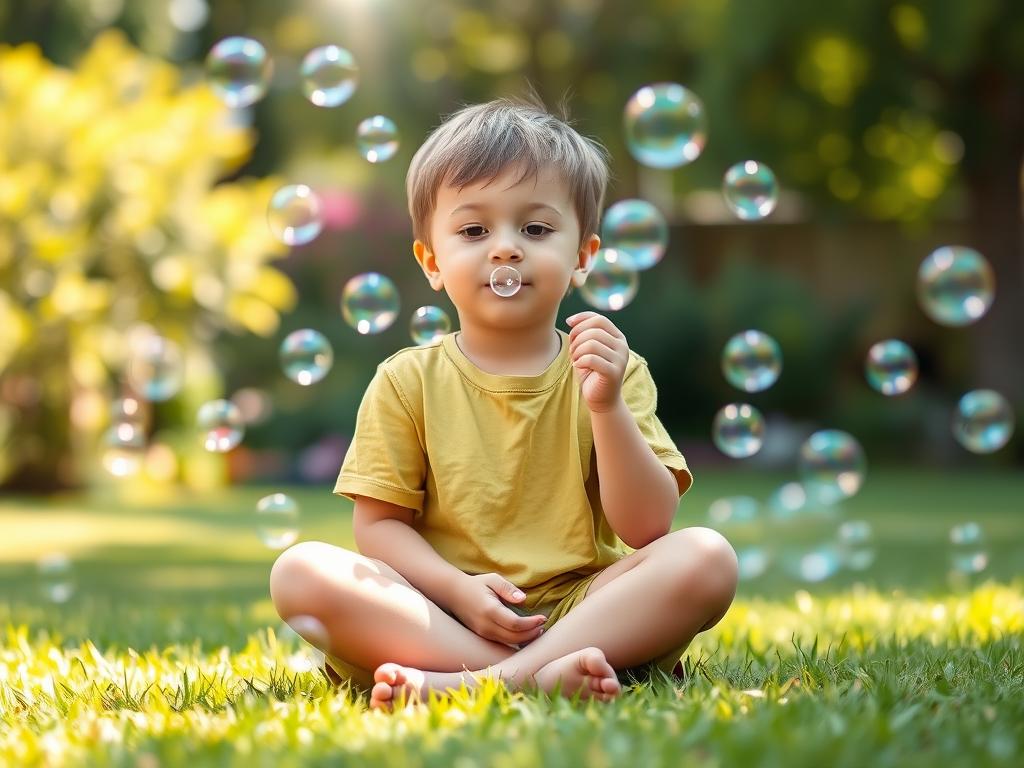
How to practice: Give your child a bubble wand and solution. Ask them to take a slow, deep breath in, and then blow out very slowly to create bubbles. Encourage them to notice how their breath affects the bubbles—too hard and they pop, too soft and they don’t form. Then have them watch the bubbles float away, paying attention to their journey until they disappear.
Benefits: Teaches breath control, encourages focused attention, and provides a visual representation of thoughts coming and going.
7. Blowing Imaginary Balloons
This breathing exercise helps children visualize their breath and practice deep breathing without props.
How to practice: Have your child cup their hands around their mouth. As they breathe in deeply through their nose, they can move their hands outward, creating an imaginary balloon. With each breath out through their mouth, they expand the balloon. After “blowing up” their balloon, they can pretend to release it and watch it fly away.
Benefits: Encourages deep breathing, uses visualization, and can be done anywhere without special materials.
8. Mindful Coloring or Drawing
Creative activities can become mindfulness practices when approached with full attention.
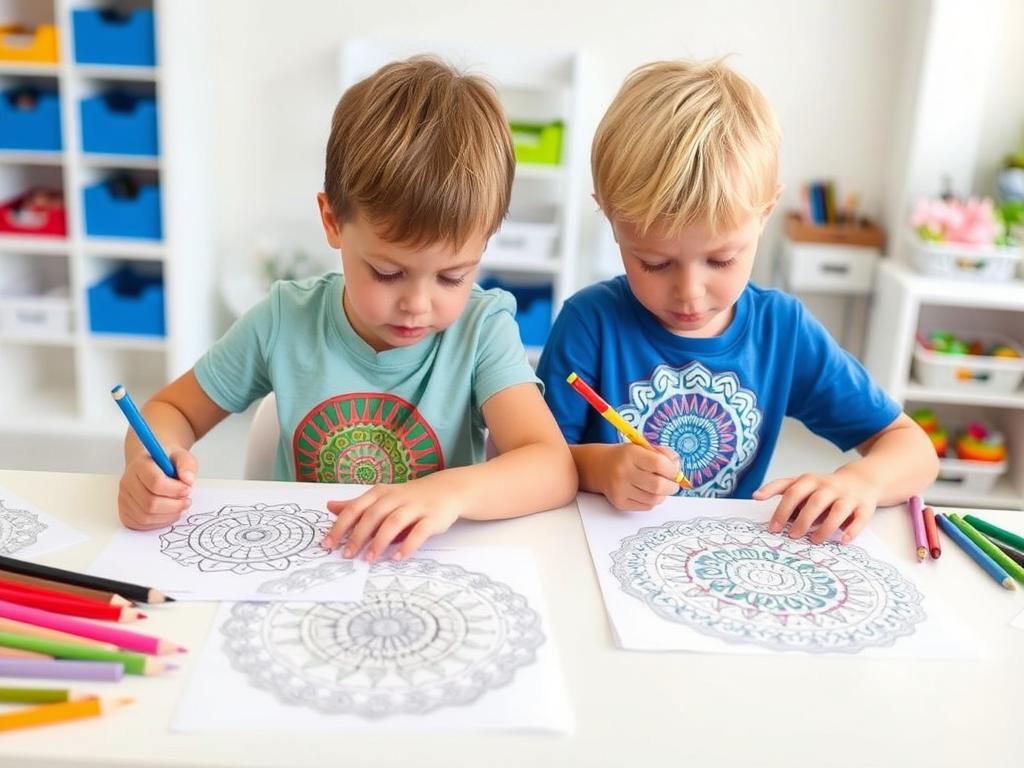
How to practice: Provide simple coloring pages (mandalas work well) or blank paper. Invite your child to color or draw with full attention, noticing the colors, the feeling of the crayon or pencil on the paper, and the emerging patterns. Encourage them to focus just on the process rather than worrying about the final product.
Benefits: Promotes focus, reduces anxiety, and introduces mindfulness through a familiar, enjoyable activity.
9. Nature Walk with Sensory Focus
The natural world offers countless opportunities for mindful awareness and wonder.
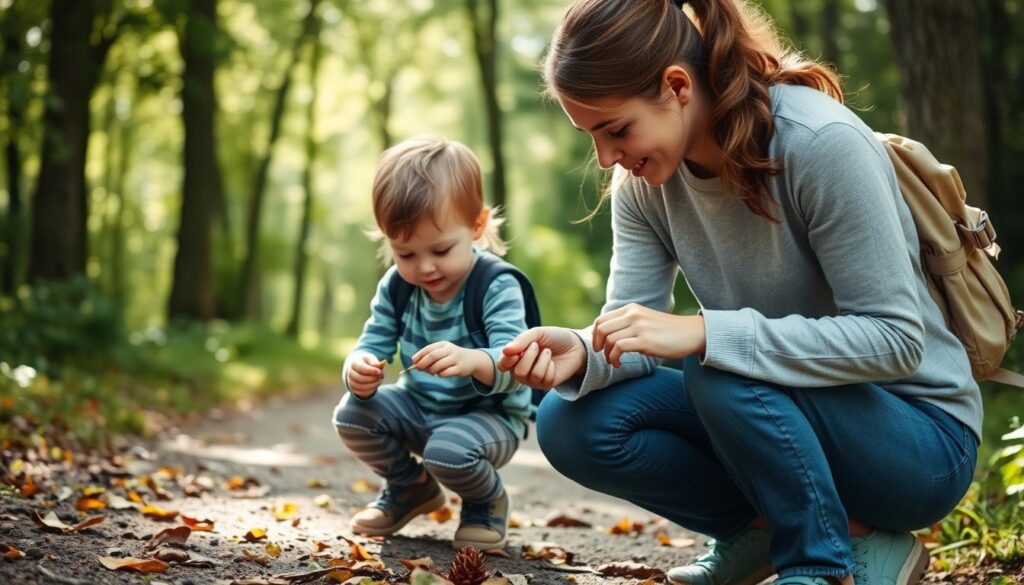
How to practice: Take a slow walk outdoors with your child. Invite them to use all their senses to explore—feeling different textures like bark or leaves, listening for bird calls or rustling leaves, looking for different colors and shapes, and smelling flowers or soil. You can make it into a gentle scavenger hunt by asking them to find something interesting for each sense.
Benefits: Connects children with nature, develops sensory awareness, and encourages curiosity and presence.
10. Gratitude Circle or Journaling
Practicing gratitude is a form of mindfulness that helps children focus on positive aspects of their lives.

How to practice: For younger children, create a gratitude circle where each person shares something they’re thankful for. This can become a dinnertime or bedtime ritual. For older children, provide a simple journal where they can write or draw three things they appreciated each day.
Benefits: Shifts attention to positive experiences, builds a habit of noticing good things, and develops a mindset of appreciation.
How to Practice Mindfulness Together
Mindfulness becomes most effective when it’s woven into daily life rather than treated as a separate activity. Here are ways to integrate these practices into your routine:
Create Mindful Moments Throughout the Day
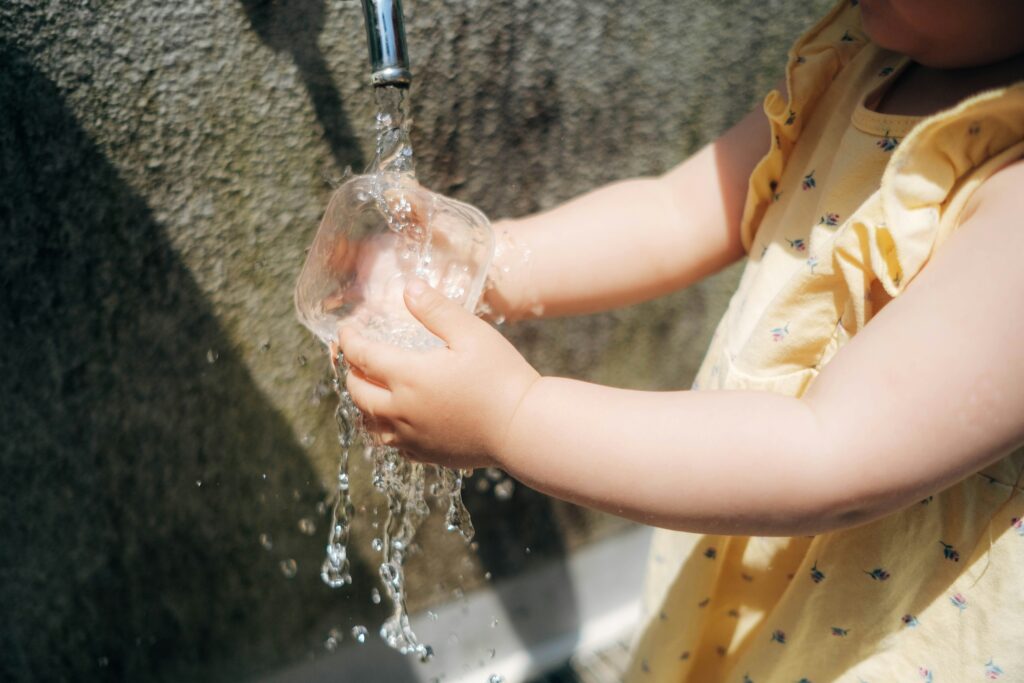
Look for natural opportunities to practice mindfulness in everyday activities:
- Morning routine: Start the day with three mindful breaths together or a brief body scan to set a calm tone.
- Mealtimes: Practice mindful eating by taking time to notice colors, smells, textures, and flavors of food.
- Transitions: Use mindfulness activities during transitions between activities, especially before homework or bedtime.
- Bedtime: End the day with a gratitude practice or a short body scan to help children wind down.
- Waiting times: Transform waiting (in lines, at appointments) into opportunities for mindful breathing or sensory awareness games.
Model Mindfulness Yourself
Children learn more from what we do than what we say. When you practice mindfulness yourself, you not only receive the benefits but also show children that these skills are valuable. Try these approaches:
- Narrate your own mindful moments: “I’m feeling frustrated, so I’m going to take three deep breaths to calm down.”
- Practice alongside your child rather than just instructing them.
- Share how mindfulness helps you: “I felt much better after our breathing exercise.”
- Be patient with yourself—children learn that mindfulness is a practice, not perfection.
Keep It Playful and Age-Appropriate
Mindfulness should feel engaging rather than like a chore. Adapt activities to suit your child’s age, interests, and attention span:
- For preschoolers (ages 3-5): Keep sessions under 5 minutes and use props, stories, and movement.
- For early elementary (ages 6-8): Sessions can extend to 5-10 minutes with more detailed guidance.
- For older elementary (ages 9-10): Children can engage in more reflective practices and longer sessions of 10-15 minutes.
Mindfulness Tools and Resources
Enhance your mindfulness practice with these helpful resources:
- Printable cards: Create simple cards with different mindfulness activities that children can choose from.
- Books: “Sitting Still Like a Frog” by Eline Snel offers child-friendly mindfulness exercises with an accompanying audio CD.
- Mindfulness jars: Keep homemade glitter jars in calming corners at home or in classrooms.
- Breathing buddies: Designate special stuffed animals specifically for breathing practices.
- Visual timers: Sand timers or visual timer apps help children understand the duration of mindfulness activities.
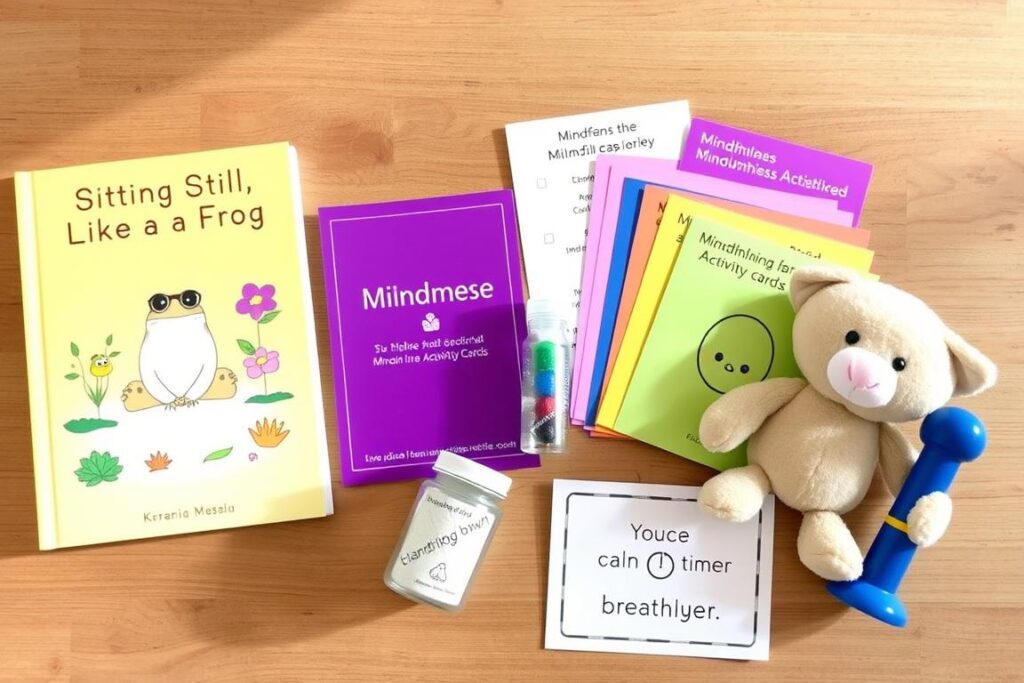
Common Challenges and How to Overcome Them
Even with the best intentions, you may encounter some roadblocks when introducing mindfulness to children:
Challenge: “My child gets distracted easily”
Solution: Start with very brief activities (even just 30 seconds) and gradually increase the duration. Use concrete objects like the glitter jar or breathing buddy to provide a focal point. Remember that noticing distractions and returning to focus IS the practice—even adults get distracted during mindfulness!
Challenge: “My child resists quiet activities”
Solution: Begin with more active forms of mindfulness like mindful walking, stretching, or the bubble breathing exercise. Present activities as games rather than exercises. Let your child choose which mindfulness activity they prefer from a few options.
Challenge: “My child doesn’t understand the concept”
Solution: Use age-appropriate metaphors and stories to explain mindfulness. The glitter jar is perfect for this—thoughts are like glitter that gets shaken up when we’re upset but settles when we’re calm. Focus on the experience rather than the concept.
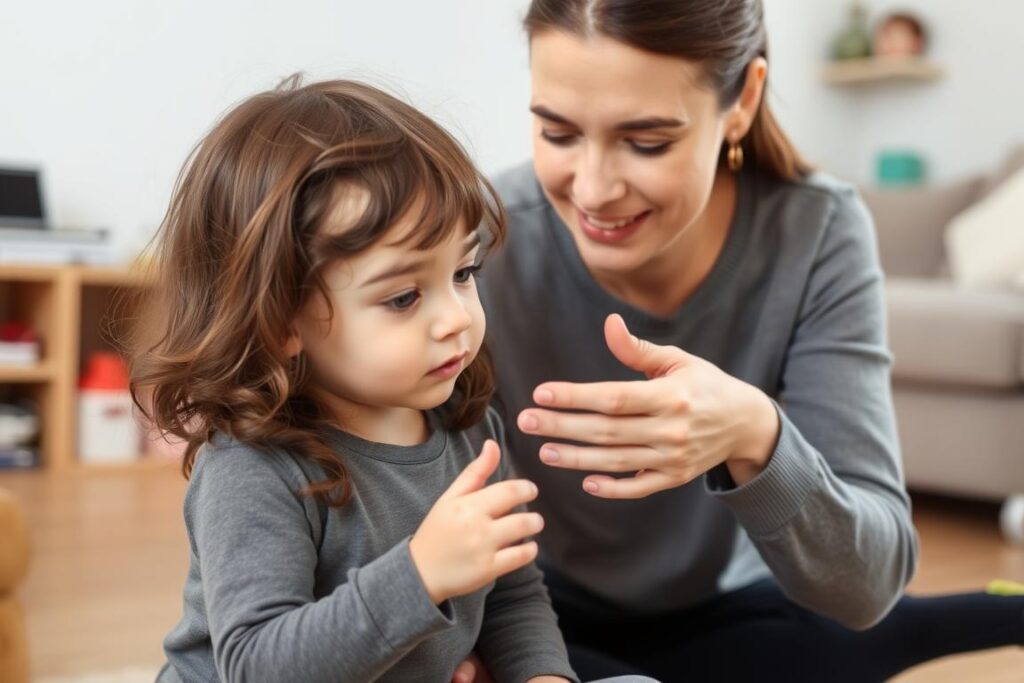
Remember: Consistency matters more than perfection. Even brief, imperfect moments of mindfulness can benefit children. Be patient with the process and celebrate small wins along the way.
Conclusion
Introducing mindfulness to children is one of the most valuable gifts we can offer them. These simple mindfulness activities for kids provide practical tools that help children develop focus, emotional regulation, and a sense of inner calm that will serve them throughout their lives.
Remember that mindfulness is a practice, not a perfect. Some days will go more smoothly than others, and that’s completely normal. The key is consistency and a playful, patient approach. Even brief moments of mindful awareness can create powerful shifts in how children relate to themselves and the world around them.
Start small, perhaps with just one activity that resonates with your child, and gradually expand your mindfulness toolkit. Notice and celebrate the small changes you observe—perhaps a deeper breath during a frustrating moment, or a child who begins to identify their emotions more clearly.
Which mindfulness activity will you try first with your child? We’d love to hear about your experiences in the comments below!

Adam Peter is a finance, travel, and automotive writer with over a decade of experience. He creates clear, practical content to help readers manage their money, explore the world with confidence, and make informed decisions about cars and travel gear. His work blends expert insight with real-world usefulness.

